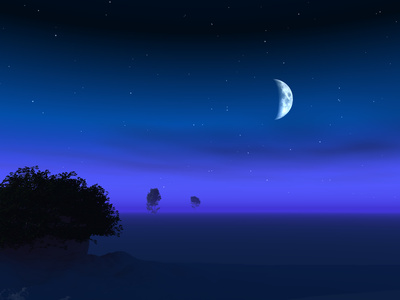Smallmouth Bass Night Fishing
 In the heat of the summer, more and more anglers are wondering about smallmouth bass night fishing as a way to catch more fish and escape the daytime heat.
In the heat of the summer, more and more anglers are wondering about smallmouth bass night fishing as a way to catch more fish and escape the daytime heat.
In many lakes, smallmouth bass are more active and feed more aggressively at night.
If you are thinking about trying this fun adventure, check out some of the tips below.
Smallmouth bass night fishing
If you’ve never night fished with jigs and florescent line under a black light, it’s an otherworldly kind of experience. The dim light illuminates shorelines and overhanging trees just enough to help navigate as you quietly ease about. But the glowing florescent lines look like one-inch well rope, making it easy to watch your partner’s line out the corner of your eye. So when either angler sees line movement or feels something unusual, the response often becomes a shared process. The angler who thinks he had a strike begins a commentary that not only describes what he’s feeling and seeing, but begs for confirmation from the supporting audience. Though the dialogue may be brief, it’s oftentimes punctuated with laughter and an exciting ending. So night fishing with black lights is an entertaining as well as productive way to catch fish. Source
Great night fishing tips
An awesome article on Bassmaster.com about nightime smallmouth fishing really goes into high detail of everything you need to consider.
Mature smallmouth are extremely wary – even more so than largemouth. Telemetry studies show that on lakes with a lot of summer boat traffic, smallmouth shift their primary feeding to the cover of darkness.
Based on 15 years of fishing experience, Brumbaugh relies on a specific temperature guideline to launch his night fishing mode. “Once water temperature climbs past 80 degrees on inland lakes, smallmouth suspend off structure during the day and switch a significant part of their feeding activity to after sundown.”
Brumbaugh also spends considerable time fishing Lake Erie. He acknowledges that Great Lakes smallies feed during daylight hours right through the summer. “The water temperature on these big lakes rarely reaches 80 degrees – which supports my theory that temperature turns smallmouth into nocturnal feeders.”
Night location: Habitat or prey driven?
The structural characteristics that typically describe a classic smallmouth lake are the very ones that make for a good night fishing lake, according to Duckworth. “First, I want a lake that has a lot of points dropping into deep water. Daytime water visibility must be more than 4 feet – in other words, pretty clear water. And I want a good flow so the water will be exchanged fairly quickly. Those green bass might like stagnant water, but not brown bass.
“At night I concentrate on main lake points as well as some of the major points in creek arms,” continues Duckworth. “I like a shale bank with an area of red clay nearby.
Crawfish love red clay, and smallies love points. So when you put the two together — Shazam!”
Yet Duckworth says the best lakes for catching big smallmouth bass at night are ones with threadfin shad. “Threadfin are basically a shallow water baitfish, which means smallmouth will be shallow to feed. In lakes where alewives have been introduced, the summer smallmouth fishing has been crippled substantially because the bass will be more than 40 feet deep with the alewives. They won’t even come shallower under the cover of darkness because there is so much food down deep.”
Tuned-in techniques
Brumbaugh starts off each night by fishing main lake flats with a spinnerbait. He makes his own 1/2-ounce tandem spinnerbaits with copper Colorado blades and a dark skirt.
“I focus on the weedbeds that grow around or immediately adjacent to stumps and small rockpiles,” explains Brumbaugh. “The ideal situation is a weed patch that extends to a depth of about 12 or 15 feet, with a rockpile, row of stumps or an old gravel roadbed on the outside edge.
“I position the boat a short distance beyond the deep weed edge and cast shallower,” continues Brumbaugh. “In most instances, there will be a 2- to 3-foot space between the tops of the weeds and the surface of the water. I retrieve the spinnerbait just fast enough so it does not sink into the vegetation. You’ve got to develop a sense of feel to keep the spinnerbait barely ticking the top weed strands.”
When he reaches what he judges to be the weed edge, he slows the spinnerbait so it flutters downward. He continues slow rolling the bait a few more feet before reeling in quickly for another cast.
If unable to make connections with smallmouth after fishing several flats, Brumbaugh will move to a bluff area. Here he positions the boat much closer to the bank, because these shorelines fall quickly into deep water. Using the same tandem spinnerbait, he will slow roll it off the ledges, working the lure down to a depth of about 15 feet.
Brumbaugh’s backup bait for the steep shorelines is a dark-colored 1/2-ounce jig with a rattle. He chooses either a Strike King Rattling Pro-Model Jig or a Stanley Rattlin’ Flat Eye Jig. To this he adds a 4-inch Zoom Super Chunk, choosing this model because of vibrant-action legs compared to standard chunks.
Another favorite night bait is a 6- to 7-inch ribbontail worm on a 3/0 hook with a 1/4- or 3/8-ounce weight. Brumbaugh is partial to the Berkley Power Worm, but has success with other worms, too, as long as the bait has a swimming, ribbonlike tail.
“Since smallies may be very shallow on the walls at night, I cast the jig or worm right to the water’s edge,” explains Brumbaugh. “Let the bait fall straight down on a slack line. Once it touches bottom, take up slack line and pull the bait by lifting the rod tip a couple inches. Then hold the tip high until the jig or worm swims back to the bottom. I’ll continue edging the bait down to about the 15-foot depth. That’s the maximum depth I believe is necessary to fish after dark.”
Duckworth’s two top lures are a Texas rigged Berkley Power Craw on a 1/0 XPoint wide gap hook with a 1/8-ounce sliding worm weight, and a 1/4-ounce Punisher Hair Jig. “This soft plastic crawfish rig works great for clients because it is very snag resistant. Plus, smallmouth will hold on to the Power Craw long enough for an inexperienced angler to detect the pickup and set the hook. I always go with a black or black/blue Power Craw.”
However, Duckworth points out that the traditional bait for nighttime smallmouth in Central Tennessee is a hair jig. His pick, the Punisher Jig, is tied with a special craft hair that has more undulating action than similar products. Duckworth fishes the jig without a trailer. While recommending basic black to anglers, he admits the jig color on the end of his rod will likely be olive-green with a touch of orange.
The need for a black light is a point of agreement for both anglers. Without one, many pickups would go unnoticed at night. Regardless of pound test, Brumbaugh and Duckworth use fluorescent line that will show up under the black light. Source
Smallmouth bass night fishing will energize you and give you memories to last a lifetime. Make sure you take someone that you trust and can laugh with because we all know the night can make you crazy! If you thought this post was helpful and interesting, feel free to share this with your friends and LIKE this page!

